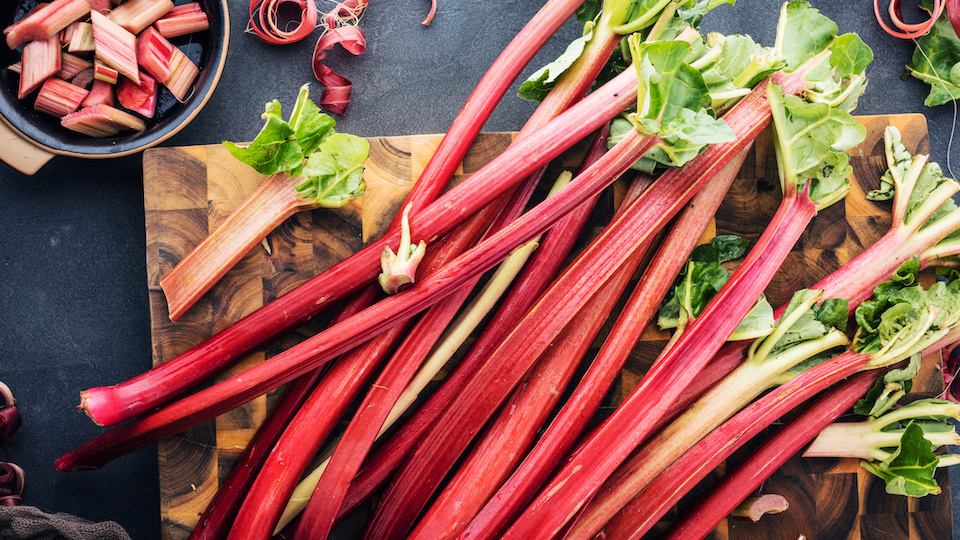Though not necessarily the most common crop, rhubarb holds a special place in the hearts of many northern gardeners. It thrives in the chilly environment and produces a tart, delicious crop to kick off the harvest season. Hardy, low-maintenance, and easy-to-grow, this yummy fruit (vegetable?) deserves a place in your garden this season.
Rhubarb: Fruit or Veggie?
Like the tomato, rhubarb has existed in this nebulous space between fruit and vegetable for years. Technically, it is botanically a vegetable. However, it is classified as a fruit since it is usually cooked into pies as a dessert and paired with other fruits such as strawberries. However you enjoy it, rhubarb is easy to grow and will stick around for years to come!
How to grow rhubarb
Planting
Though rhubarb can survive as far south as growing zone 9, it does best in climates where it stays below 40 degrees Fahrenheit in the wintertime and below 75 in the summer. Excessive heat can stunt the growth and leave you with small, underwhelming, limpy stalks that aren’t exactly tasty.
Be sure to prepare your planting area by removing all weeds and ensuring that the soil is rich, well-draining, and fertile. It is always a good idea to amend your soil with some organic compost to ensure your crop is getting enough nutrients. Plant one-year rhubarb crowns in the spring in a sunny area as soon as the ground can be worked. It’s okay if there is another freeze, they need this period of cold to get established.
To plant, simply dig large bushel basket-size holes and space rhubarb plants about 4 feet apart. Make the holes deep enough so that that roots can rest about 1-2 inches below the soil surface. Remember, you are planting root divisions, or crowns, not seeds, which are often unreliable and produce plants that are the wrong variety.
Care
Thankfully, rhubarb plants are super low-maintenance and don’t require a ton of post-planting care. Be sure to water them regularly, especially in periods of drought, and pluck off any buds that develop. This will help ensure that all of the energy is going into developing the juicy stalks. Mulch around the base of the plant to help retain moisture and smother weeds in the spring and mulch again in the fall once the plant dies away to protect the roots from hard freezes in the winter.
Dividing
Since rhubarb is a long-lasting perennial, it is a good idea to divide it every 5-10 years or when the stalks start becoming thin and leggy. Divide in early spring or fall when the plants are still dormant by digging and lifting clumps and cutting roots into pieces about 2 inches across. Replant the best sections in a new area or share with friends.
Diseases
Rhubarb is incredibly resilient and does not usually have any issues with diseases or pests. If you planted in a soggy, shady spot, your plant might develop Verticillium wilt, which causes yellow leaves early in the season and will eventually wilt the entire plant if action isn’t taken. The best thing you can do is follow proper planting guidelines. If you didn’t, be sure to keep the stalks thin to promote air circulation and remove any infected plants or stalks from the area. Stop watering as much and attempt to remedy soil drainage, if possible.
Harvest
Remember, the leaves of the rhubarb plant are poisonous. Remove them and place them in your compost pile before you even bring the rhubarb stalks indoors to avoid any accidental ingestion. Do not harvest in the first growing season so that the plant can become established. After that, harvest the stalks when they are 12 to 18 inches long by grabbing the base of the plant and pulling it off with a gentle twist. Be sure to leave at least two stalks on each plant so that you can harvest again and again. A mature plant will usually have a harvest season of 8-10 weeks, but it is always a good idea to stop harvesting once the stems start to get shorter and thinner, even if it is in this harvest window.
Use stalks in pies, jams, jellies, sauces, or cooking and enjoy finding new and exciting ways to experiment with this unusual fruit.
-Susan Patterson




